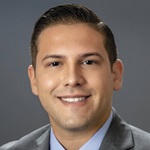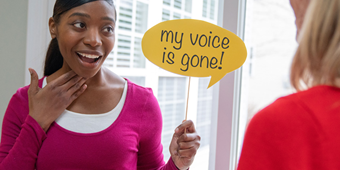- Back and Spine
- Back Pain
- Bone and Joint Health
- Health Topics
- Joint Conditions/Injuries/Treatment
- Osteoarthritis
Scoliosis: When Perfect Posture Isn’t Possible

Find Your Perfect Match
Answer a few questions and we'll provide you with a list of primary care providers that best fit your needs.
Do you remember your parent or a long-ago teacher insisting that you “stand up straight”? When you have scoliosis, honoring that request just isn’t possible. Scoliosis is a condition that causes the spine to curve from side-to-side. Viewed from behind, scoliosis curves your spine like a C or an S. As it progresses, scoliosis causes your body to lean to one side.
Scoliosis In Children
“Some babies are born with congenital malformations which can cause the spine to curve abnormally,” explains Dr. Daniel Quinones. Other children develop a curvature in their spine slowly, and it becomes noticeable around the age of 10 to 12. It often is discovered when children are checked for scoliosis at school, or when their doctor is doing a physical exam.
“We don’t know why scoliosis develops,” says Dr. Quinones. But it is manageable. If you’re a parent, it’s a good idea to take a peek at your child’s spine when they are young to be sure there is no curve, Dr. Quinones recommends. “It grows very slowly, so check more than once,” he says. And if you see anything that concerns you, contact the pediatrician.
In children, scoliosis typically does not cause back pain, affect internal organs, or affect quality of life, “but it should be treated; don’t ignore it,” says Dr. Quinones.
Treatment usually begins once the curve reaches 25 degrees. “Before that we monitor it with x-rays,” says Dr. Quinones. A hard shell bracecustom-molded to your child’s spine is usually the first line of treatment. It puts pressure on the curve, explains Dr. Quinones, so that as the child grows the curve can’t get worse. The brace is usually worn during waking hours. “The more you wear it, the better it works.”
“If the curve reaches 40-50 degrees, braces don’t work as well and we talk about surgery,” says Dr. Quinones. Only a small percentage of children with scoliosis require surgery. There are two types of surgery:
- Posterior spinal fusion which uses screws to attach rods into the bone. This helps to realign the spine and prevent scoliosis from progressing, Dr. Quinones explains.
- Vertebral body tethering which involves using screws to attach a rope-like device along the side of the vertebrae. The rope is pulled tight. As the child grows taller the spine slowly straightens.
According to Dr. Quinones, surgery outcomes are usually very good. Studies of twins suggest that scoliosis can run in families, but direct evidence has not been found. Patients with baseline neurological disorders like cerebral palsy or Marfan syndrome or neurofibromatosis have a higher risk of scoliosis. Scoliosis is not the result of behaviors like carrying heavy backpacks, lifting heavy objects, or poor posture.
Scoliosis is a condition that causes the spine to curve from side-to-side.
Scoliosis In Adults
Adults with scoliosis may have developed it due to spinal degeneration or may have had it since childhood. Possibly, it was never treated, or the treatment wasn’t successful, or maybe it wasn’t bad enough to require treatment, says Dr. Quinones. “I sometimes see adults who had surgery 10, 20, 30 years ago when an older type of spinal instrumentation was used.”
The treatment process for adults occurs in these stages:
- Evaluation to determine what is causing the pain. It could be due to deformity, or spine degeneration, arthritis, a bulging disc, the inability to stand up straight, and/or muscle weakness. Leg pain sometimes results from pressure on the nerves in the lower (lumbar) spine.
- Physical therapy to stabilize the spine and pelvis, core muscles, and legs. This also requires doing exercises at home. Braces aren’t effective treatment for adults because they are no longer growing.
- Medication to relieve pain, reduce inflammation, and relax the muscles.
- Surgery to correct the deformity is considered if the other steps did not sufficiently relieve the pain, explains Dr. Quinones. “If a deformity is pitching them off to the side, or forward, and they are struggling to stand up straight, they can benefit from spinal realignment or spinal reconstructive surgery.” Studies show that following surgery, most scoliosis adult patients have a higher quality of life, are happier, have less pain, better function, and the ability to walk farther.
Although it’s important to stay active and physically fit if you have scoliosis, unfortunately exercise programs have not been shown to keep scoliosis from getting worse. Chiropractic treatment, electrical stimulation, and nutritional supplements also have not shown success in halting the progression of scoliosis.
Find Your Perfect Match
Answer a few questions and we'll provide you with a list of primary care providers that best fit your needs.
Source: Daniel Quinones, MD, Premier Orthopedics; American Academy of Orthopedic Surgeons; University of Maryland Medical Center; National Institute of Arthritis and Musculoskeletal and Skin Diseases





